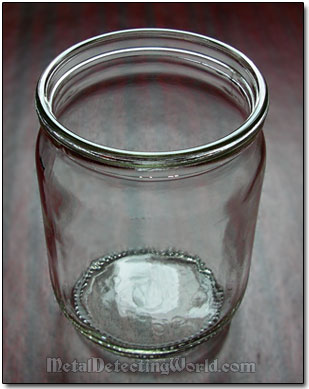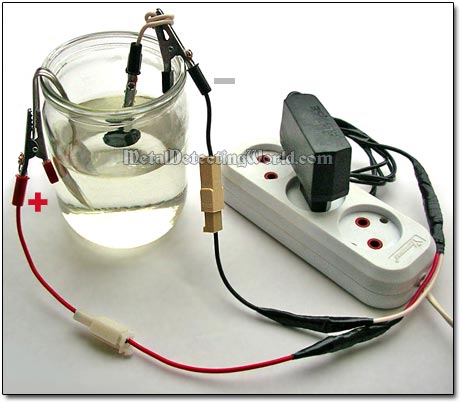How To Clean Coins with Electrolysis - A Detailed and Illustrated Tutorial, page 11
Building a Simple Coin Electrolysis Machine of "CLASSIC" Type
(...CONTINUED from Previous Page)
NON-CONDUCTIVE CONTAINER FOR ELECTROLYTIC CELL
While choosing the type and size of a non-metal (non-conductive) container, one should consider the following important aspects of the electrolytic coin cleaning:
1) As the coins to be cleaned are mostly of small sizes, they should be in close proximity to the anode to establish an adequate density of electric current inside the electrolytic cell.
2) The coin, electrolyte and the cleaning action should be observed to make sure everything is under control during the process.
3) There must be enough space inside the container so that the current flowing through electrolyte should have enough room for forming a dynamic and encompassing "field", so both sides of the coin could be cleaned somewhat simultaneously. However, it is less likely to happen because the line of sight (see details on page 14) takes the highest priority, and one side of the coin will get more cleaning action than another.
4) It is important to maintain the same level of the electrolyte in the cell to keep its concentration constant. The water in the electrolytic solution will be decomposed at certain rate and should be added to the solution accordingly. The smaller the container, the faster the decrease in the electrolyte's level, the faster the increase in concentration. The latter may cause problems.
After experimenting with a few containers or small vats of different types and sizes, I settled on a 17 fl. oz. clear glass jar as the most optimal for cleaning coins with electrolysis.
17 Fl. Oz Clear Glass Jar for Electrolysis Setup

After I assembled my electrolytic coin cleaning machine of the Classic Type, this is what it looked like:
A Complete Setup of Classic Type for Cleaning Coins with Electrolysis

The main drawback of the "Classic" type setup is that an operator has to carry out the electrolytic coin cleaning twice - one coin's side at a time, unless a second anode is placed into the electrolyte to face the coin's other side. However, it is hard to position the coin right in the middle between the anodes, so one side of the coin would not be cleaned as good as another.